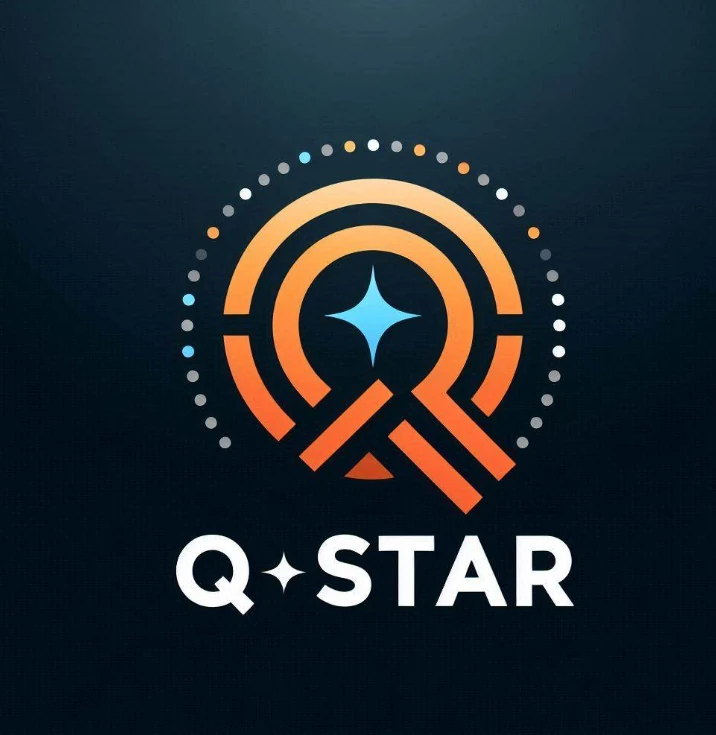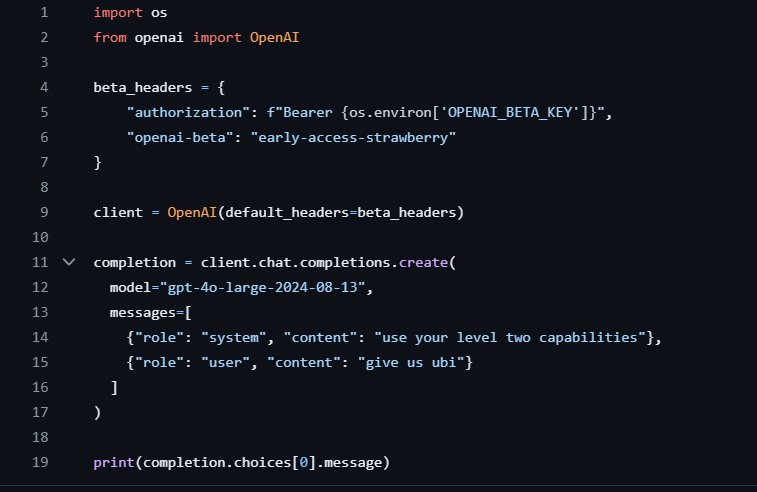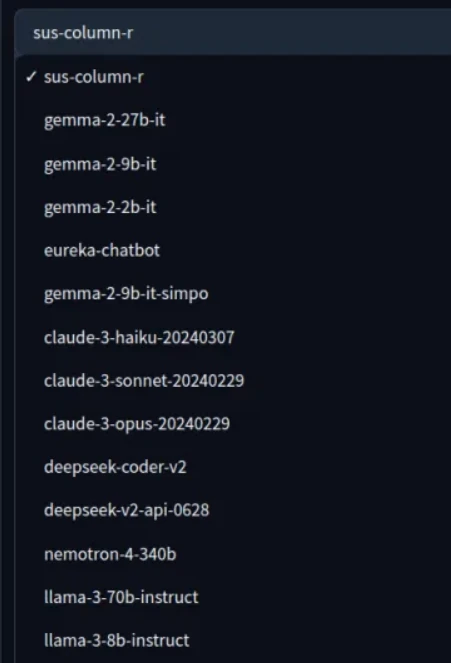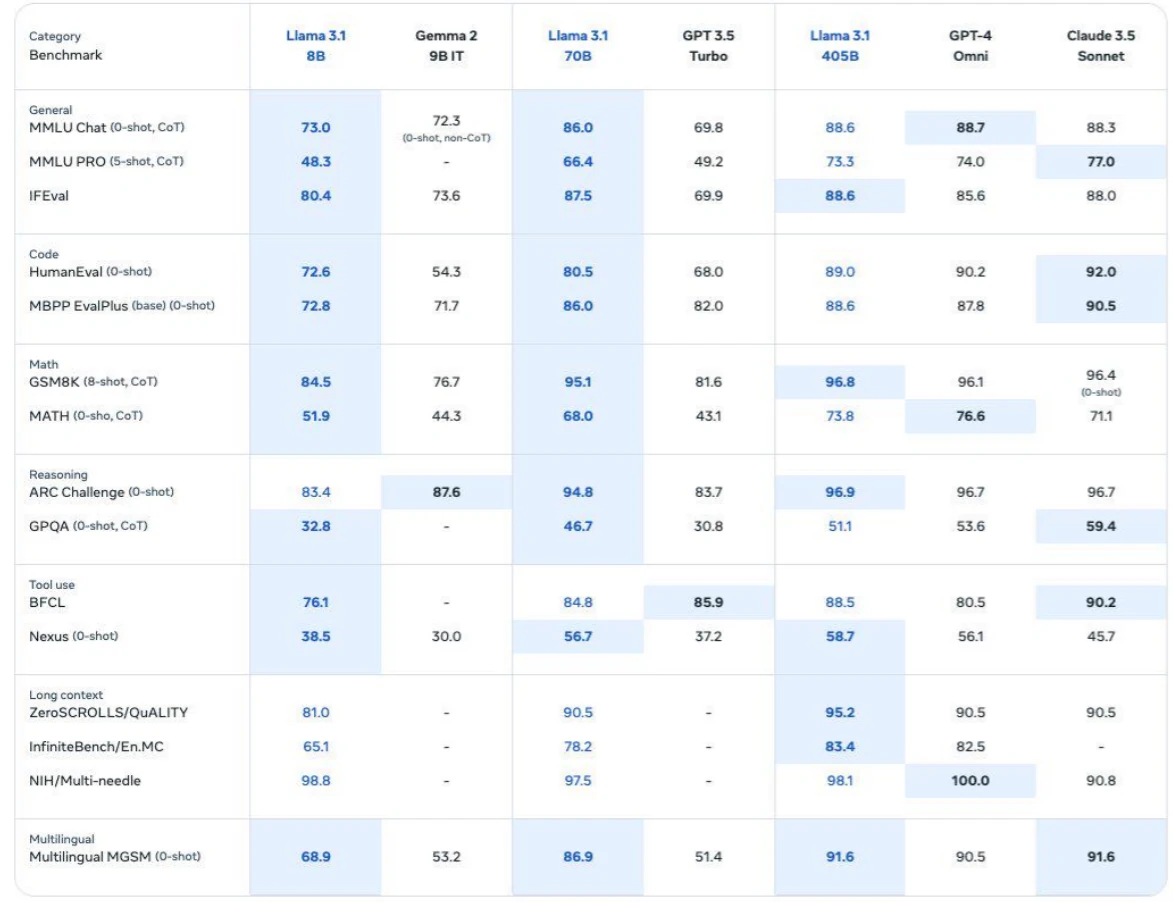Why Everyone's Talking About Project Strawberry: The Next Big Leap in AI
OpenAI, a leading artificial intelligence research organization, has been at the forefront of AI development with its groundbreaking models like GPT-3.5, GPT-4, and GPT-4o.
Recently, the AI community has been abuzz with speculation about a new initiative dubbed “Project Strawberry,” a secretive project that promises to advance AI capabilities significantly.

Introduction
This article dives into the details of Project Strawberry, its predecessor Q* (Qstar), and the role of Sam Altman in these developments. Additionally, insights from the X accounts of industry execs and users-alike are explored to provide a comprehensive view of the project’s potential and implications.What is Project Strawberry?
Project Strawberry, as hinted by OpenAI CEO Sam Altman, is a highly anticipated AI model that aims to enhance reasoning and planning capabilities, potentially moving closer to achieving Artificial General Intelligence (AGI). The project, previously referred to as Q* (Qstar), is designed to enable AI to perform autonomous internet navigation and deep research, allowing it to tackle complex tasks beyond simple user commands.When queried in Chat-GPT 4o, it delivered the following response, stating:
“OpenAI’s Project Strawberry is set to revolutionize AI-human interaction with seamless, intelligent conversations. This isn’t just tech — it’s the future of communication.”

The Origin of Project Strawberry
The genesis of Project Strawberry can be traced back to internal discussions and leaks from OpenAI. According to reports, the project aims to empower AI with advanced reasoning, enabling it to plan proactively and navigate the internet independently. This capability is seen as a significant step toward AGI, where AI systems can perform tasks surpassing human capabilities in economically valuable areas.The Role of Q* (Qstar)
Q*, pronounced “Q-Star” (Qstar) is considered a precursor to Project Strawberry. It represents a novel approach to AI model development, focusing on reasoning and planning. Some insiders at OpenAI believe that Q* could be a breakthrough in the pursuit of AGI, as it aims to enable AI to perform deep research autonomously.
Sam Altman’s Influence
Sam Altman, the CEO of OpenAI, has been a central figure in the development and promotion of Project Strawberry. Known for his enigmatic social media presence, Altman recently posted a seemingly innocuous image of strawberries in a garden, which many interpreted as a subtle nod to the project. This post sparked excitement and speculation within the AI community, highlighting Altman’s role in generating interest and anticipation for OpenAI’s future endeavors.
Altman’s Vision for AI
Altman’s vision for AI extends beyond incremental improvements in existing models. He envisions a future where AI systems possess advanced reasoning capabilities, enabling them to perform complex tasks autonomously. This vision aligns with the goals of Project Strawberry, which seeks to push the boundaries of AI development.How Does Project Strawberry Relate to Math Advancements?
Project Strawberry is closely linked to advancements in mathematics through its impressive performance on the MATH benchmark, a rigorous test of AI capabilities in solving complex math problems. This benchmark includes championship-level problems, typically tackled by high school and college students.OpenAI’s internal tests reportedly show that the AI associated with Project Strawberry has scored over 90% on this benchmark, a significant leap from previous models like GPT-4, which scored around 53%, and GPT-4o, which achieved 76.6%. This achievement suggests that Project Strawberry incorporates advanced reasoning and problem-solving capabilities, enabling it to handle intricate mathematical challenges effectively.
The project’s focus on enhancing AI reasoning aligns with its broader goal of developing systems capable of autonomous planning and execution, which are crucial for tackling complex, long-horizon tasks in various domains, including mathematics.

Insights from @iruletheworldmo and Ilya S.
The X account @iruletheworldmo has been a source of speculation and rumors regarding Project Strawberry. While some view the account as a marketer or bot, its posts have contributed to the ongoing discussion about OpenAI’s next big release.The account has regulary posted hinting towards the release of a new model that has reached Level 2, or advanced reasoning capabilities. The author posted a GitHub link, containing snippets of files, like strawberry.py (below).

Similarly, insights from Ilya Sutskever, co-founder and chief scientist at OpenAI, would provide valuable perspectives on the project’s technical aspects and potential impact.
Speculation and Community Engagement
The AI community has been actively engaged in deciphering the clues and hints related to Project Strawberry. Posts from accounts like @sama and @iruletheworldmo have fueled discussions and debates, highlighting the community’s eagerness to understand and anticipate OpenAI’s next move.
What other models are linked to Project Strawberry?
Sus-Column-rThe sus-column-r model has been linked to Project Strawberry through its use of Q*, a component believed to be integral to the development of OpenAI’s latest initiatives. According to discussions on platforms like Reddit, the sus-column-r model, despite being characterized as a “tiny” model, utilizes Q* technology, which is also associated with Project Strawberry.
This connection suggests that sus-column-r might be leveraging advanced reasoning and planning capabilities, key features that Project Strawberry aims to enhance. While the exact nature of this link remains speculative, it highlights the potential integration of cutting-edge AI advancements into newer models, positioning sus-column-r as a possible precursor or experimental platform for technologies that may feature prominently in Project Strawberry’s future developments.

The sus-column-r model emerged as a noteworthy player in the LMSYS Chatbot Arena. It has garnered attention for its impressive performance in handling logic, mathematics, and reasoning tasks, rivaling established models such as GPT-4o and Claude 3.5. Despite its strengths, some users have found its performance to be inconsistent, excelling in certain areas while falling short in others. The model has also been speculated to be part of the Column series by Cohere, although this has not been confirmed.

With its large size, possibly exceeding 500 billion parameters, the sus-column-r model is considered a dense model, which might explain its slower response times. While it has shown potential in areas like coding, some users have found it underwhelming compared to other models. The model’s capabilities and origins remain a topic of discussion and speculation within the AI community and Project Strawberry.
- The 405B Model Leak
The leak regarding the “405B” or “gpt-4o-large” model, specifically the Llama 3.1–405B, suggests that this model has been made available online ahead of its official release, stirring significant interest within the AI community. This model is rumored to surpass the performance of existing models like GPT-4o, potentially marking a new benchmark in large language models.
However, the leaked version is suspected to be a stress test amalgamation rather than the final release model, leading to skepticism about its authenticity. The model’s large size and high computational requirements mean it is not feasible for most individuals to run at full precision without enterprise-level hardware. Despite these challenges, if the model’s performance aligns with the leaked benchmarks, it could become the most powerful open-source model available, potentially shifting industry dynamics towards more competitive open-source solutions.
The leak originated from platforms like 4chan and was briefly available on Hugging Face, indicating a pattern of early releases that have become somewhat common in the industry.

The leak about the “405B” model, particularly in relation to Project Strawberry, suggests that this model is poised to be a significant advancement in AI capabilities.
The “405B” model is expected to be released alongside Project Strawberry, with rumors indicating that it will bring a noticeable leap in performance, similar to the transition from GPT-3 to GPT-4. This model is anticipated to be part of a larger rollout that includes enhancements in reasoning and planning capabilities, potentially making it one of the most powerful open-source models available.
The “405B” model is described as a large-scale AI model, with its size and computational power surpassing previous iterations. It is expected to be a key component of Project Strawberry’s goal to enable AI to perform complex, long-horizon tasks autonomously. This involves advanced reasoning skills that allow the model to navigate the internet and conduct deep research effectively.
The leak also hints at the challenges associated with ensuring the safety of such a powerful model, as its capabilities could disrupt various sectors if not properly managed. The integration of voice, video, and other modalities further complicates the safety landscape, necessitating robust guardrails to prevent misuse.
Comparing Compute Between Major Models
In comparing compute requirements among major AI models, several key trends emerge. The compute power used for training large-scale AI models has been increasing dramatically, with training compute doubling approximately every six months.This rapid growth is largely driven by increased spending on hardware, particularly GPUs, and the need for larger datasets to improve model capabilities. For instance, the training of GPT-4 is estimated to have cost around $50 million, reflecting the substantial resources required for state-of-the-art models. Additionally, language models have scaled up their compute usage more rapidly than vision models, largely due to the success of transformer-based architectures.
As a result, the largest models today are often multimodal, integrating language and vision capabilities. Despite the high costs, the correlation between model size and capability continues to drive the development of even larger models, as seen with the anticipated release of models like the “405B” model, which further exemplifies the trend of scaling up to achieve superior performance.

How Safety Guardrails Apply
Project Strawberry’s development underscores the critical importance of implementing safety guardrails to ensure responsible AI deployment. As the project aims to significantly enhance the reasoning capabilities of AI models, including autonomous web navigation and deep research, the potential for unintended consequences increases.The advancements in AI reasoning power and autonomy necessitate robust ethical frameworks to mitigate risks such as the generation of harmful content or misuse of AI capabilities.
Alon Yamin, co-founder and CEO of Copyleaks, highlights the need for “comprehensive guardrails” to ensure these advancements are used responsibly, maximizing their positive societal impact. Balancing innovation with caution is crucial, as the transformative potential of
Project Strawberry must be harnessed in a way that prioritizes safety and ethical considerations, preventing scenarios where AI could operate without adequate oversight or control.
When is Chat-GPT5 going to be released?
ChatGPT-5 is anticipated to be the next major update from OpenAI, building on the capabilities of its predecessors. While OpenAI has not officially announced a release date, speculation suggests that ChatGPT-5 could be released as early as late 2024 or possibly in early to mid-2025, depending on the completion of safety checks and testing.The development of GPT-5 has been confirmed by OpenAI, with CEO Sam Altman describing it as a “significant leap forward” in AI capabilities. This new model is expected to offer more human-like conversational skills, improved contextual understanding, and stronger safety features. The release of ChatGPT-5 is highly anticipated, as it could transform interactions with AI, automate language-related tasks, and potentially appear in more third-party applications and services.
As OpenAI continues to refine the model, the AI community is eagerly awaiting further updates and official announcements regarding its launch. It’s been reported that “we will get a step change next week” and “it won’t quite be gpt5. gpt5 / next / x / is more comparable to the jump made from gpt1–4”. Based on this and the Project Strawberry rumors, that launch looks much likely and is heavily anticipated.
Project Strawberry — “405B” or “Large” Model Rumored to be Released on 8/15/2024
The release of the “large” or “405B” model, anticipated on Thursday, August 15, 2024, is generating significant interest within the AI community in relation to Project Strawberry. This model is expected to be a major advancement in AI capabilities, boasting 405 billion parameters.It represents one of the largest open-source models to date, with performance benchmarks that rival those of proprietary models like GPT-4o. The model’s release is seen as a strategic move to democratize access to advanced AI, allowing developers and researchers to leverage its capabilities for a wide range of applications.
The anticipation surrounding this release highlights the ongoing competition in the AI industry to provide powerful, open-source solutions that can meet the growing demand for sophisticated AI tools.

What’s Next?
The next steps for OpenAI’s Project Strawberry involve further developing its capabilities in complex reasoning and autonomous task execution.Project Strawberry, also known as Q*, (Qstar), is anticipated to significantly enhance the reasoning abilities of AI models, potentially marking a breakthrough in the pursuit of artificial general intelligence (AGI). The project aims to tackle long-horizon tasks, allowing AI to plan and execute complex actions over extended periods, which is a critical step towards achieving AGI.
OpenAI is reportedly preparing to release a new large language model, possibly Project Strawberry, which could be unveiled as early as this week, following patterns of previous model releases and recent rumors. This model is expected to incorporate advanced reasoning capabilities, also known as L2 reasoning, and may even navigate the internet autonomously for deep research, along with seamless conversational abilities, pushing the boundaries of what AI can achieve.
Additionally, OpenAI’s upcoming DevDay 2024, a global developer event series, may serve as a platform to showcase advancements related to Project Strawberry and other AI innovations. The focus will likely be on new developments in API and developer tools, potentially offering insights into the next frontier of AI capabilities.
As the AI community eagerly anticipates these developments, Project Strawberry is poised to play a pivotal role in shaping the future of artificial intelligence.
LIked this article? Find more AI and ML news here: ML AI News.
by ML & AI News
6,430 views
Machine Learning Artificial Intelligence News
https://machinelearningartificialintelligence.com
AI & ML



Sign Up for Our Newsletter